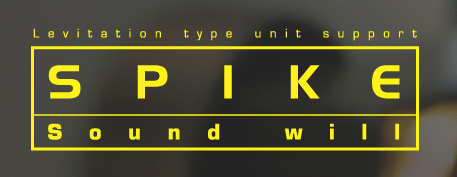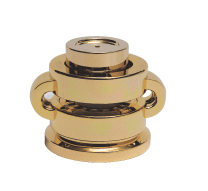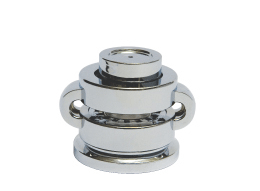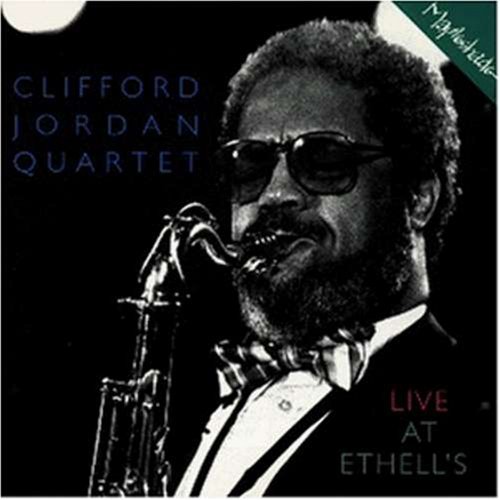Spike Sound Will Isolation Feet
| Spike Sound Will Isolation Feet |
| The Merits of Magnetic Isolation |
|
|
|
August 2009 |


Catchy name,”Spike.” Perhaps, however, not an ideal choice. Because among audiophiles “spike” is a familiar generic term for devices, often looking rather like fanciful golf tees, that have a diametrically different purpose. “Spikes” however are not spikes, they are proprietary concentric magnetic isolation feet bearing the unlikely name, Spike Sound Will.
 I received two sets of feet; four gold, rated at 10-20Kg, and four chromium black, rated at 20-40Kg. Unlike other isolation devices, magnetic levitation feet are designed to prevent any physical contact between the base platform and the suspended device. There is “contact” only between opposing magnetic fields.
I received two sets of feet; four gold, rated at 10-20Kg, and four chromium black, rated at 20-40Kg. Unlike other isolation devices, magnetic levitation feet are designed to prevent any physical contact between the base platform and the suspended device. There is “contact” only between opposing magnetic fields.
The very minimal instructions on the package state that more than four levitation feet may sometimes be required, or additional weight may have to be added to the suspended unit. I had to do some experimenting to achieve a proper setup, figuring out things as I went along. I ended with three chromium black feet under my CD transport (Accuphase DP90), and three gold feet under the DAC (Bel Canto DAC3). Each foot must be loaded sufficiently to disengage physical contact between the supporting cylinder and its retaining collar. Despite a nominal minimum weight specification for three gold feet of 7.5Kg (16.5 pounds), my 14 pound DAC is sufficiently heavy to float the cylinders. Ideally the suspended weight should be evenly distributed among the feet, visually evident from the protrusion of the central cylinder below its retaining collar. Because the mass is not evenly distributed in the CD transport – the front being much heavier than the back, and the left front being heavier than the right front – I had to try numerous, asymmetrical positions to attain even weight distribution. The DAC was far less trouble, with two feet at the rear and one at the front the load appears equally distributed.
The Spike Sound Will design consists of an inner plastic cylinder that has gear-like radial teeth on its periphery and contains an encapsulated neodymium magnet. It is this cylinder that physically contacts and supports the weight. The cylinder rides inside an outer retaining collar that contains corresponding radial teeth. Unweighted, these corresponding teeth align with the teeth of the inner cylinder so it is properly centered. As weight is applied the teeth disengage. Lateral shifting (and thus physical contact) is possible but is generally prevented by the inertia of the supported unit. This cylinder/ring arrangement is physically attached by two lateral arms to a base containing another neodymium magnet of opposite polarity. As weight increases the two magnets are pushed closer together and the force of repulsion increases.
Neodymium magnetic material is an alloy of neodymium, iron and boron (Nd2Fe14B). This material was co-invented in 1982 in an effort to find an inexpensive alternative to samarium cobalt magnets. It turned out to be an improvement, not just a alternative. Neodymium magnets are the most powerful permanent magnets in commercial use, having high flux density and high coercivity (resistance to demagnetizing). It is an ideal choice for this application, providing small, light-weight feet that can support a range of weights. The plastic used is molded of ABS (Acrylonitrile Butadiene Styrene) resin, a very strong, rigid and hard copolymer. Spike Sound Will feet are nicely finished in shiny metallic platings.
So the supported device is actually riding on a magnetic field (a system also used in some very expensive turntables). Both the DAC and the CD have a certain amount of (relatively) low frequency springiness, which decays immediately. In theory at least, a higher resonant frequency means that lower frequencies, like foot falls, would see little resistance passing through the suspension system. Based on these suppositions, I expected CD playback would skip if the floor bounced enough.
In fact I jumped up and down till the windows rattled. There was no skipping at all. This exemplary behavior of the CD/Spike system is not explained by resonant frequency alone. (Spike feet appear to have a higher damping factor than a typical resonant system.) Nor does it explain another, unforeseen, phenomenon: a palpable change in the sound. I definitely didn’t expect this one.
Now, I understand something of the physics of resonance, how frequencies above a resonant point meet an increasing resistance to and dissipation of vibrational energy. For example, by installing a small bicycle inner-tube under my CD transport, which weighs 45 pounds, I created a resonant system somewhere around 3Hz, effectively isolating the transport from foot falls, earth tremors, sonic booms and the like. It solved the occasional problem of CD skipping on playback when a non-ballerina walked through the living room. But like any simple, under-damped resonant system, it retained kinetic energy. Not ideal.
What happens to the vibration that lies above resonance and therefore does not propagate unimpeded through a resonant system? Some of it probably bounces back as standing waves and dissipates elsewhere. Most of it converts to heat locally. In the case of a installation-base/compliant-element/supported-weight system,mechanical friction (typically internal friction) converts motion to heat on a molecular level. For a relatively undamped, simple system with a single restoring force, the rate of roll-off above resonance is 6db per octave. This means that if the resonant frequency of a system is 10Hz, a 20Hz vibration will be rolled-off (diminished) by 50%, 40Hz by 75% and so on. But Spike Sound Will feet do not have a mechanism for molecular friction; what flexes under external excitement is not a bicycle tube or a spring or a hemisphere of sobothane, but two repelling magnetic fields. So what happens to vibrations that reach the base that supports the feet?
As luck would have it, today doing another edit of this review I discovered the actual patent for Spike Sound Will feet on the internet. This document contains the following definitive statement:”The supporting unit supports the object respective to the installing surface in a levitation manner so that vibration of the object to be supported and noises caused by the vibration can be reduced, and vibrations and noises, which are generated between floors in residential space, such as an apartment, can be minimized.”
A thorough perusal of the patent suggests that the primary intended application of Spike Sound Will feet is to prevent vibration from reaching residential floors. (Yeil M&C, the Korean manufacturer, also makes magnetic levitation units suitable for heavy loudspeakers.) I’ve lived in apartments and I applaud this goal. And obviously it works both ways, equally preventing vibrations in the floor from reaching supported equipment. I think the operative word in the quotation above is minimized. The patent does not suggest that absolute isolation is possible, but rather that the passage of vibration is lessened, some gets past the feet, and some does not. The same can be said for a simple resonant-type suspension, but whether the degree of isolation in a magnetic suspension is also frequency dependent, I don’t know and lack the test apparatus to determine.
I’ve speculated about the theory behind Spike Sound Will in order to clarify my own understanding. When I asked Tash Goka, the Divergent Technology representative, if employing these feet constitutes a resonant system, he wrote that, “Reduction of [vibrational] energy by the means of friction and therefore converting it to heat and dissipating it does not apply to the operation principle of our Spike Sound Will magnetic isolation devices as there is no contact to generate any friction between the object and the surface it is placed up on. They are designed to isolate components from large vibration energy sources as well as the other components mounted on the same component rack or platform by magnetically levitating them.”
In another email he writes, “A magnetic field does not have any particular mass like the others and therefore does not store energy, eliminating the need to dissipate it by friction however. Isolation by materials of any kind is subject to transmit energy depending on the frequency resonance of that material also. Magnetic field may also transmit energy depending on the density of the field as you pointed out. This is expected to be at a much lower rate as there is no particular mass to resonate and store energy.”
But friction is not the only mode of converting vibrational energy to heat. A (moving) magnetic field can convert kinetic energy to eddycurrent in a proximate electrical conductor. (There are a number of patents on the internet for magnetic brakes and clutches.) But since I was not sure if this applies to Spike Sound Will feet, and having only my speculations about eddy current to go on, I contacted the physics department at the University of California at Berkeley. Here are some conclusions based on their response.
A suspended system that efficiently and rapidly damps (dissipates) vibrational energy is not primarily a resonant system. The greater the damping factor, the more rapidly transmitted motion will cease. A purely magnetic system damps by inducing eddy current in nearby conductors, and it is the electrical resistance of those conductors that converts the induced current loops into heat. In the case of Spike feet, eddy current is self-induced in the magnets. And I am informed by Tash Goka that the finish on the ABS body is made of thin deposits of various metals (to achieve particular colors) and that this coating is somewhat conductive. So eddy currents can be induced in the finish, as well as the magnets. These provide the high damping factor I observed; thus while my CD transport, suspended on an inner tube, vibrates for three or four seconds, on Spike feet vibration ceases almost immediately and the amplitude (excursion) is less.
Now, as for the change in sound, I wouldn’t have thought vibration a big concern in our home. I mean, we live in a one-family house in a rural neighborhood, built on bed rock. It’s generally quiet. There are no trucks going by shaking the sidewalk. In fact, there are no sidewalks. Occasionally a squirrel will run across the roof or an acorn woodpecker will declare himself or the neighbor’s rooster will make a fuss. A couple of times a year an executive jet from the local airport will fly over. But house shaking? Only the rare temblor. On the other hand, maybe the subtle motions of the planet itself, the energy of volcanoes and tsunamis and earthquakes transmitted through ocean and bedrock, is isolated from the equipment; the sort of motion monitored by accelerometers in laboratories.
Looked at another way, vibration from the CD player (it has motors and gears, motors and gears have friction, and friction produces vibration) could be subtly effecting other pieces of equipment sharing the same rack, DAC, amplifiers, preamp and external crossovers. Rather far fetched I admit. I wouldn’t bet on any of this being measurable, but that it’s a factor in the physical environment seems indisputable. I can speculate, but in reality I simply do not know about these possible sources of unwanted vibration. But I am reasonably certain of what I heard.
 Listening to music with Spike feet was, for want of an exact word, asweeter experience. I played a favorite Beethoven quartet, Opus 74(Chandos CHAN10191, Borodin String Quartet), and was impressed that noticeably less imaginative effortwas required to “see” the instruments. Details, bowing, cavity resonance, overtones were very evident.
Listening to music with Spike feet was, for want of an exact word, asweeter experience. I played a favorite Beethoven quartet, Opus 74(Chandos CHAN10191, Borodin String Quartet), and was impressed that noticeably less imaginative effortwas required to “see” the instruments. Details, bowing, cavity resonance, overtones were very evident.
Lateral accuracy and stability were improved. This was generally true of everything I played. But the real surprise came that evening when I played a recording of Faure’s Requiem (Naxos 8.550765); particularly in terms of rendering image depth. The tenors back over there, the sopranos over there, the instruments feeling so unstrained and natural. A lovely life-like neutrality throughout. And “over there” was not a somewhat uncertain lateral location roughly between and behind the loudspeakers. It was rather more precise, and the depth of the sound stage was obvious and palpable.
 Sviatoslav Richter’s recording of Beethoven’s sonata Opus 57 (Appassionata) on an XRCD reissue (JM-XR24017) always sounds great, very dynamic, very clean and articulate; always evidences Richter’s absolute rightness of technique and interpretation. It is one of Richter’s very rare studio sessions, well recorded, and proving there is definitely something to the XRCD process. With the loudness set just right so the instrument is in focus (Peter Walker’s concept), it is easy to sit back, close your eyes, and feel that something amazing is taking place. The image this stereo now presents is even more magical, its dynamics and nuanced detail make listening to this CD an even more priceless experience.
Sviatoslav Richter’s recording of Beethoven’s sonata Opus 57 (Appassionata) on an XRCD reissue (JM-XR24017) always sounds great, very dynamic, very clean and articulate; always evidences Richter’s absolute rightness of technique and interpretation. It is one of Richter’s very rare studio sessions, well recorded, and proving there is definitely something to the XRCD process. With the loudness set just right so the instrument is in focus (Peter Walker’s concept), it is easy to sit back, close your eyes, and feel that something amazing is taking place. The image this stereo now presents is even more magical, its dynamics and nuanced detail make listening to this CD an even more priceless experience.
Not simply the best imaging and detail I’ve heard on this system, but imaging that was quite astonishing at times. I could hardly believe my ears when I “saw” the choir stage right, behind the orchestra on the Faure. And another thing that I don’t know quite how to explain: since installing the Spike feet I’ve generally been listening at reduced volume levels. Not intentionally or even experimentally. Just something I noticed the other day. Musical detail is simply easier to hear at lower volume levels.
Addendum. Thanks to Tash Goka, subsequent to the second draft of this review I received several additional sets of Spike Sound Will feet and redeployed them to include my monoblock amplifiers (Bel Canto REF1000s). I retained the three chromium black feet under the CD transport, placed four silver (5-10Kg) feet under the DAC and four gold (10-20Kg) feet under each monoblock (which weigh about 19 pounds each). The DAC was a snap, but properly positioning the feet under the amplifiers again required experimentation and resulted in a very asymmetrical pattern. Fortunately for this purpose, both the DAC and the monoblocks have steel chassis, so the feet magnetically adhere to the bottoms and moving the equipment, accidentally or deliberately, poses less risk of altering the position of the feet. It is in fact helpful to completely lift a suspended device to allow the feet to properly center, before carefully lowering it. The upshot of all this is completely different suspension arrangements, with the exception of the CD. This made an audible difference, particularly in the degree of the already noted changes.
 My curiosity overcame my hesitation to resort once again to Clifford Jordan’s Live at Ethell’s (Mapleshade 56292). Those of you who’ve followed my reviews will know I regard this as a major test CD and may recall my lavish praise for its reproduction by the REF1000 MkII, how the image was so solid you felt you could almost place a drink on the piano. But I also noticed some additional changes with the new arrangement of Spike feet. The cymbals had noticeably faster transients, crisp and clean sibilance, more presence and body. And I found the midrange to be fuller and more detailed. It makes no sense, but I would have sworn I could “see” Clifford Jordan raise his sax to his lips after a vocal passage. I also played the Beethoven quartet again and found impressive improvements. Despite having played this CD a hundred times over the past year, I literally heard sounds emerging from these instruments I will swear I never before heard. The body, the physical solidity of the instruments was more obvious. They took on a richness, a greater beauty. I was quite enchanted: it is perhaps analogous to the difference between a pedestrian pressing, and an XRCD release of the same performance. As well, the reverberation, the liveness of the room was distinctly more evident.
My curiosity overcame my hesitation to resort once again to Clifford Jordan’s Live at Ethell’s (Mapleshade 56292). Those of you who’ve followed my reviews will know I regard this as a major test CD and may recall my lavish praise for its reproduction by the REF1000 MkII, how the image was so solid you felt you could almost place a drink on the piano. But I also noticed some additional changes with the new arrangement of Spike feet. The cymbals had noticeably faster transients, crisp and clean sibilance, more presence and body. And I found the midrange to be fuller and more detailed. It makes no sense, but I would have sworn I could “see” Clifford Jordan raise his sax to his lips after a vocal passage. I also played the Beethoven quartet again and found impressive improvements. Despite having played this CD a hundred times over the past year, I literally heard sounds emerging from these instruments I will swear I never before heard. The body, the physical solidity of the instruments was more obvious. They took on a richness, a greater beauty. I was quite enchanted: it is perhaps analogous to the difference between a pedestrian pressing, and an XRCD release of the same performance. As well, the reverberation, the liveness of the room was distinctly more evident.
What with the improvements to this stereo over the past year or two – amplifiers, AC cords and conditioner – I was quite impressed with the sound and I had been feeling I was getting about the best these loudspeakers in this room could offer. The Spike levitation feet demonstrated I was incorrect. It these be nuances, they’re nuances that have made an important difference.
A word about superlatives in audio reviews. It’s been said often enough that the amount of perceived difference in changing, adding to (or subtracting from) an audio system has a lot to do with the resolving power and the accuracy of that system. (I would add it also has to do with the auditioner’s familiarity with the system and the program material, and with their state of mind). It seems that above a certain level of fidelity, nuances begin to take on greater significance, they begin to stand out and make larger perceived differences. Which I suppose is why the well-heeled among us go the additional ten or twenty thousand for really good cables. Me, if I had twenty grand to spend on audio, I’d hire a carpenter to redo the living room ceiling and walls with lapped cedar. And if there were money left over, I’d hire an acoustic technician to install sound panels, including special curtains on the windows. I’d love to know what this puppy would sound like if the basics, the physical acoustic environment, were optimized. Lacking twenty grand, Spike Sound Willfeet, at less than $200 for a set of four, provide a (relatively) inexpensive and technologically appealing way of making good sound even better.
In fairness I should add that Spike Sound Will is not unique; there are other manufacturers of levitation devices. Clearaudio makes a footer called Magix Magnetic Levitation Isolation Feet. Rated at 12 lbs, each foot sells for $195. Four of them could support my CD transport in style, for $780. Relaxa (S.A.P. Audio International) manufactures primarily isolation platforms, but they will sell you three of their magnetic levitation feet for $495. Hyperion also makes magnetic feet selling for $152 (11 pound load) and $102 (7 pound load) per foot. I have not tried any of these products so no comparison with Spikes is possible. What is unique about Spikes is that you can actually see the bottom of the supporting cylinder and get visual confirmation that it is properly levitating. This also makes it easy to determine the relative load and position the feet for even weight distribution.

![]()
Specifications:
Spike Sound-Will: available in three different weight capacities of 5~10 kgs (12~22 lbs), 10~20 kgs (22~40 lbs.) and 20~40 kgs (40~70lbs).
They are packaged in sets of four and the introductory selling price in the us will be $200.00 per set.
US Distributor: Joe Cohen
The Lotus Group
www.lotusgroupusa.com
Office: 415-897-8884
Warehouse: 415-883-7056
Cell: 415-328-1752
Fax: 415-897-7338
Canadian Distributor: Tash Goka
e-mail: divergent@divertech.com
Telephone: 519 749 1565.
![]()
Don’t forget to bookmark us! (CTRL-SHFT-D)
Stereo Times Masthead
Publisher/Founder
Clement Perry
Editor
Dave Thomas
Senior Editors
Frank Alles, Mike Girardi, Russell Lichter, Terry London, Moreno Mitchell, Paul Szabady, Bill Wells, Mike Wright, and Stephen Yan,
Current Contributors
David Abramson, Tim Barrall, Dave Allison, Ron Cook, Lewis Dardick, John Hoffman, Dan Secula, Don Shaulis, Greg Simmons, Eric Teh, Greg Voth, Richard Willie, Ed Van Winkle, Rob Dockery, Richard Doron, and Daveed Turek
Site Management Clement Perry
Ad Designer: Martin Perry





Be the first to comment on: Spike Sound Will Isolation Feet